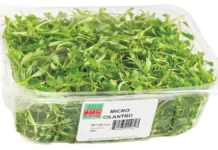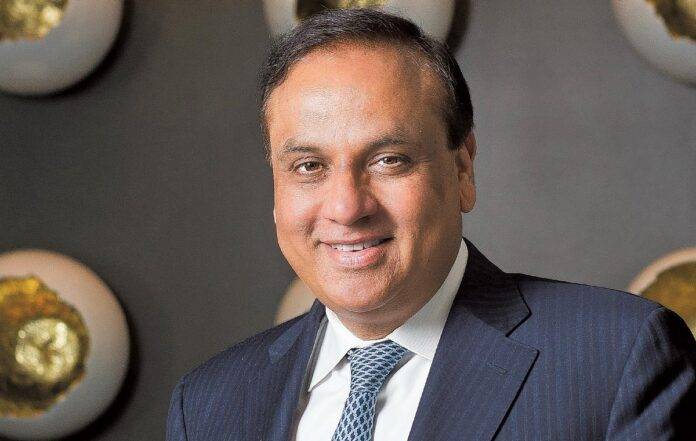
Founder, The Knightsbridge Restaurant Group
The restaurant business is not for the fainthearted. Research indicates that the average lifespan of a restaurant is five years. Findings from the Perry Group study published four years ago revealed that 70% of those establishments that are still operating after their first anniversary will shutter their doors in the next three to five years. Further, 90% of the restaurants that remain in business beyond the five-year mark will continue to operate for a minimum of 10 years.
It is therefore no mean feat that the Knightsbridge Restaurant Group, led by its founder Ashok Bajaj, continues to successfully operate in the Washington, D.C. metro area and remain at the top of its game for three decades. His success, we may speculate, may be due to his academic background – a foundation that was built upon his training in commerce, hospitality and tourism.
Ashok Bajaj took a very circuitous route to the United States in 1988 following a successful career in the hospitality industry, which began after he completed postgraduate studies in Hotel Management and Tourism in India. The hotel chain he worked for then, relocated him to London and in his quest for his next adventure traveled to Sydney, Australia. It was the first leg of a journey with stops in several major U.S. cities that ended in the nation’s capital where his now 10 establishments have been thriving over the last 30 years.
As the industry rebounds from the trouncing it received over the last two-and-a-half years coupled with the resulting labor shortage, supply chain issues, and now inflation, Total Food Service wanted to hear from Ashok Bajaj, a master restaurateur whose successful ventures exemplify the proverbial Midas touch, as well as endurance and sophistication.
Could you talk a little bit about who cultivated your love of food in the restaurant industry as you grew up in India?
It wasn’t just the food. There were so many aspects related to the restaurant and hotel industry. I went to hotel school and did my management training in restaurants and hotels. Then I moved to London to open the first very smart Indian restaurant called Bombay Brasserie for the company I was working for, the Taj group. During my early 20s in London, the city at that time did not have a history of great restaurants. However, starting in the late ‘80s and into the ‘90s that environment changed. And I saw a lot from being in different restaurants and that’s how the passion for food and passion for developing different concepts truly began. Before that my love of food was only limited to my mother’s cooking who was a great cook and we had great help at home.
How did you end up in Sydney, Australia?
I always wanted to open a boutique hotel that would feature a 3–4-star restaurant there. That was a dream I had in London. In fact, it was a dream I had since I was young. As manager of the Bombay Brasserie, I met a business partner who was Australian.
At the time I also had a consulting firm called Night Switch Management. After meeting several times, he said ‘look I’m in real estate, you like hospitality and you want to open a hotel’. Back then the Australian government was encouraging young entrepreneurs to move to Sydney, and they were giving unsecured loans which prompted the move to Sydney, Australia. When I got there, the person I was supposed to be doing business with said, ‘the building we thought was going to be a hotel didn’t materialize’. And so, I went back to London. We continued to converse and then he suggested the United States and I thought, United States? I don’t know about the United States. When you’re living in London, you’re closer to home, and as a young man that’s where I wanted to be. Anyway, I ended up coming here first to New York, then I went to Chicago and San Francisco, and my last stop was Washington, D.C., and I liked the feel there. It is a federal city, open, and it just felt right and here I am. And that was in 1988.
How did Knightsbridge come to be? Talk a little bit about how these restaurants came to be and what was the first one in Washington, D.C.?
The first one I opened is called Bombay Club which is still there 32-33 years later. The second restaurant I opened was called the 701 Restaurant on Pennsylvania Ave. That was the first restaurant in the city to have a caviar bar featuring the modern American cuisine and supper club and that was there for just over 29 years until I was not able to cut a deal with the landlord, so I closed two and a half years ago. It was very sad for me. I always honored my rent, but you know sometimes the landlord gets too greedy. This was about a year before COVID. He spent the last three years trying to figure out what to do with the space and it is still empty.
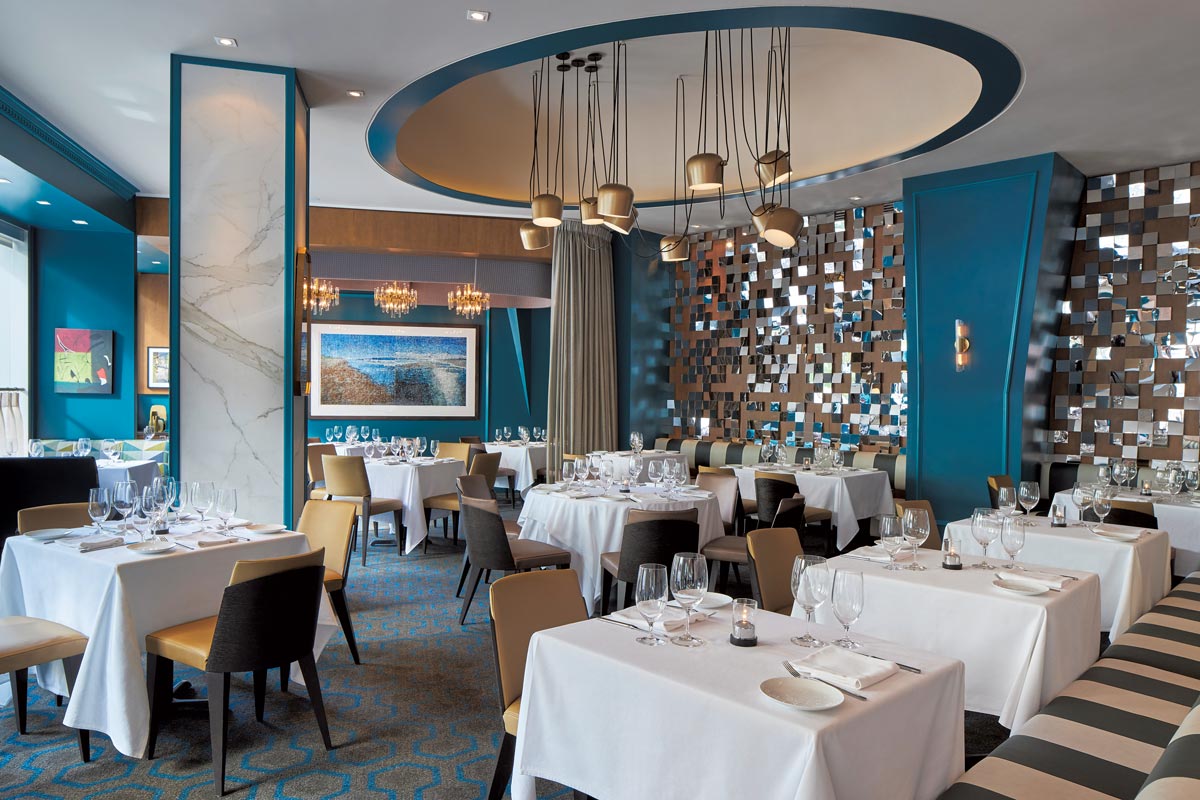
My third restaurant was called the Oval Room, which I closed and rebranded as La Bise. I don’t know if you remember this, but two years ago there were riots in DC, and they destroyed part of the restaurant and I just didn’t feel like after that about keeping the same concept and I just moved on. But in my group at that time, I had opened Annabelle two-and-a-half years ago featuring a modern American cuisine. All of them were modern American cuisine and I said you know what I don’t have French cuisine in my portfolio, and I had always wanted to do something like that and that’s how I ended up with the restaurant between a fine dining French and a brasserie called La Bise, formerly the Oval Room.
There was also Adeio, which is sort of a modern American brasserie and then I opened Bardeio, which was the first wine bar in the city. So those two concepts ran for 21- 22 years and then I changed them to Sababa, modern Israeli cuisine and the wine bar became Bindaas, offering Indian street food. That’s how those two restaurants came along, and they are recent in the last four or five years.
There is also Rasika, which offers a modern Indian cuisine. It has modern music and modern presentation just a little bit more affordable than Bombay Club.
You are unbelievable. I’ve never talked to anybody who has had that many concepts last that long. You either have landlords that are charging you nothing or you’re an amazing guy, one of the two.
I’m going to let you decide that.
It’s amazing. Almost nobody has restaurants that last this long. So how have you done it?
There is not a secret sauce to it. The secret thing is the following: I keep my restaurants fresh. I don’t want to use the phrase you know ‘keep reinventing’ which is not true. I make the promise that I’m going to give you great food at a great value, that that I’m going to provide you hospitality, and I’m going to continue to do so for you to keep coming back to my restaurants. They are not inexpensive restaurants. The value I provide, I give my patrons the right amount of food on the plate, keep the menu innovative, and find very good chefs – I have Frank Ruta, who is the executive chef at Annabelle. He had his own restaurant. He’s a James Beard award-winning chef. He was a Food and Wine magazine Top Chef, then he was also a chef for the White House for three different presidents. So, a great chef with a great reputation is key.
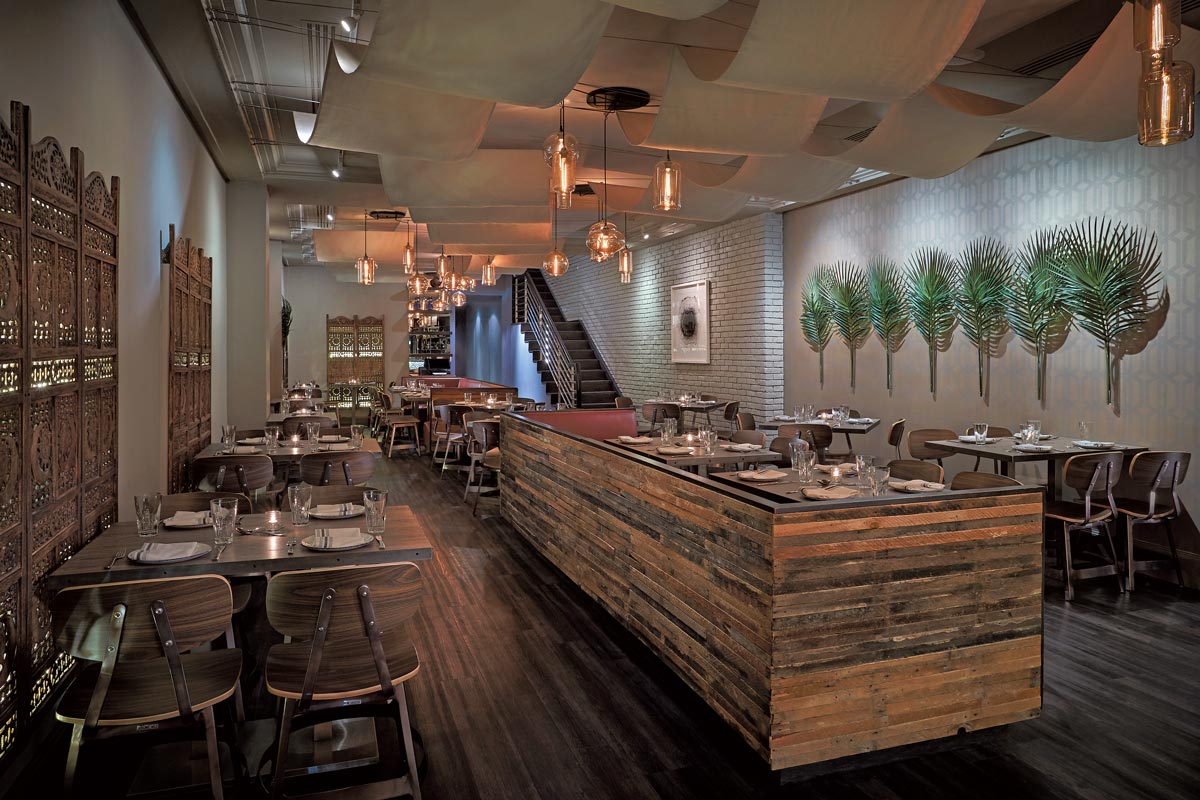
We also have Vikram Sunderam, who’s been with me for 17 years. I invited him from London to come here. He worked in the same restaurant which I opened in London, and he was the first Indian guy to win the James Beard award. So, the key to success is, that I try to hire like-minded people who share the vision, and if something is not working analyze why. When I closed Odeio people kept saying, ‘oh it’s so sad’. Ok. You’re so sad but you weren’t coming enough because they could get American food anywhere. So, they will give us the need to evolve. Plus, people are eating more ethnic food than ever before so when I did Sababa, I went to Israel a couple of times to see what Israeli cuisine is. I did my research locally and went to Jahab. I went to Montreal, Quebec and I went to London to see Israeli restaurants. Then finally I went to Israel after more than a year of research and like a flashbulb goes off. I said, oh my God Israel is like America – the food of immigrants!
Where do Bombay Club and Rasika fit into your portfolio?
Bombay club was one of the first smart restaurants to open in the United States. We won Esquire magazine’s Top Ten Restaurants by John Mariani. Food and Wine magazine’s Top Table, Gourmet and Washington Post praised us a lot, and we were always the top 50 restaurants and on and on. But I was young I didn’t know what I was getting into, and I just wanted to create the best restaurants. So, at Bombay Club, we offered food from different parts of India. But Indian food was not really well received in the United States. So, then I opened 701 Restaurant, a caviar bar and modern American cuisine and people were saying ‘we have to go to other restaurants, but we don’t know anything about Indian food. And to solve that problem I used to send newsletters to say how to order in an Indian restaurant.
I would also keep cue cards in my pocket and give it to them and I’d say ok lunch is on me, or dinner is on me, and the managers knew. So, that’s how I introduced Bombay Club to American Washingtonians.
I would also go to a gallery and invite 40/50 people to come to the Bombay Club for its reception so when they came, I passed around all the orders to them. So, it was a struggle. Even getting a space was a struggle. The landlord would say ‘you know we’re not comfortable with the Indian restaurant in our building because our lobbies will smell of Indian spices. So, you get deflated, and I decided not to open my second Indian restaurant in Washington until 16 years later. I focused on other cuisines. I opened an Italian restaurant, Viviana. Everything else but another Indian restaurant. So then after 16 years, I saw how people are eating and drinking and how the country is changing, people like ethnic foods and so I opened Rasika.
So how do you decide, I mean I’ve never seen a more diverse portfolio of cuisines than what you have. How do you look at neighborhoods and decide what’s going to work and in what space and in what neighborhood?
When I open Sababa downtown, I’m not going to say that there are a lot of people who are from Israel. That’s not the case. Here it’s more modern and people do not want to eat just hummus and falafel. So, basically, if you look at these things and examine which way the people are eating and ask which neighborhood will like the concept and is there a need for it? There’s no set rule for it. When I opened Bombay Club my only goal was, I wanted it to be close to the international society. I wanted to attract the well-traveled people who traveled to India or the White House, those who would travel to different parts of the world. The IMF and World Bank were all within a block or block and a half. That was the clientele I aimed at and I achieved that at the Bombay Club. The space was available across the street and by then I had a bit of a reputation. Bombay Club is very sophisticated. So, I thought what will compliment Bombay Club? What cuisine can I offer? Can I open up a modern American cuisine restaurant? And so, I named it Oval Room because of its proximity to the White House and its oval office and we were very successful. It was the same thing with Rasika. It was the first restaurant to get four stars, the first restaurant chef to receive the James Beard award.
How did I open Rasika? I had 701 Restaurant literally one block away from Rasika and I said ok, it was a good combination for Bombay Club and Oval Room together and the same thing happened with 701. A lot of young people were moving into the neighborhood who understood food, people were traveling to India more, and they understood the Indian food so now I have five units of Indian restaurants in the city, and I have Italian, French, American, and Mediterranean restaurants. So, the neighborhood dictates and the space also dictate.
When you opened La Bise did you see a lot of French places in DC?
When I opened Viviana, my first Italian restaurant which was changed to Modena after 10 years I thought that something needed to change but I still wanted to keep the Italian. So, when I opened La Bise there were not many French restaurants in the city. Now they are sprouting all over.
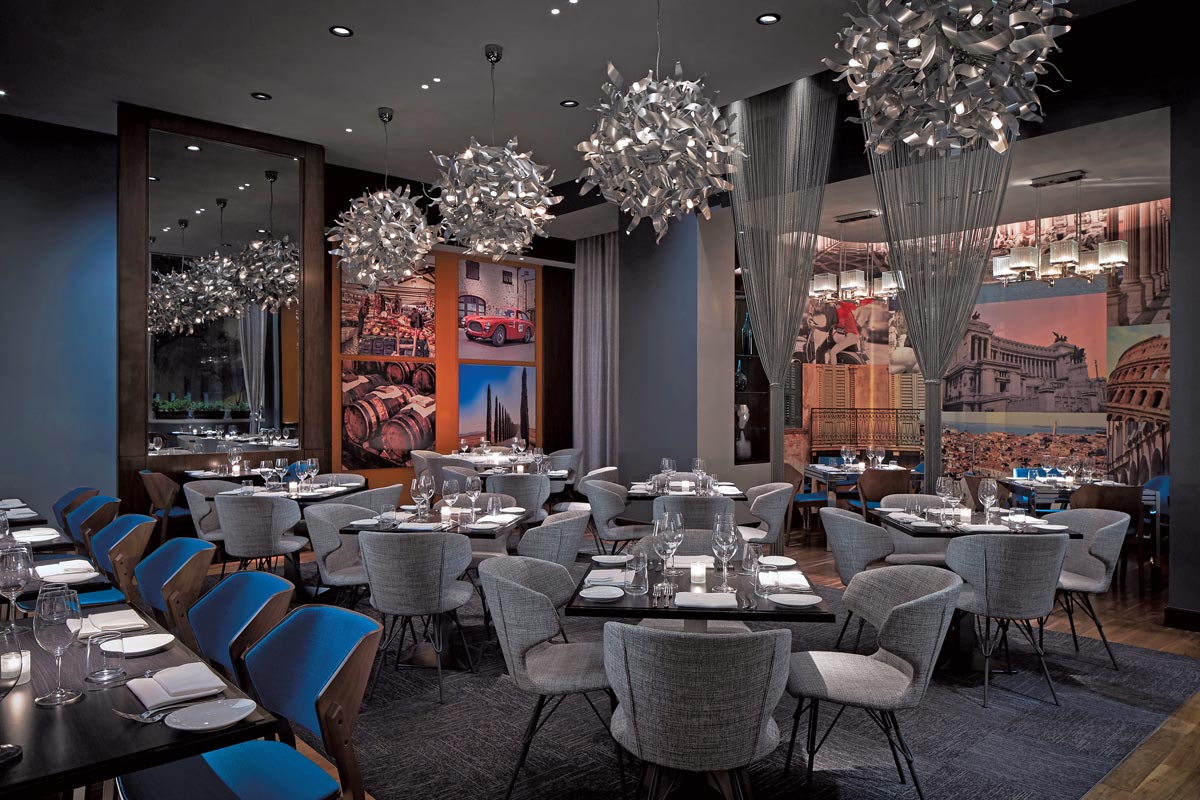
What did the last two-and-a-half years look like for you? Did you have to close restaurants? Did you have to do takeout and delivery?
The last two years have been difficult, and I have been one of the fortunate ones, I will say, and I only closed one restaurant – Olivia, which was a very successful restaurant. It was right across from the Sports Center arena, and it is in the theater district. There is the Shakespeare theatre. But those places were closed, and I was not able to come to an agreement with the landlord.
What is the DC marketplace like today? How has it changed in these 30 years that you have been operating there and how do you break down the neighborhoods in terms of where opportunity was?
DC is a completely different city from when I moved here. There were two streets and one area that people always wanted to be in when I came here. They wanted me to be there on Flanigan Avenue, KFC, and Georgetown. That was DC. Beginning and end. How has it changed? now there’s a West End there’s an East End. There’s a CBD – central business district. Now there are new neighborhoods. There is Shaw, there is Georgetown, there is Navy Yard, and there is Ward. DC has grown so much in the last 30 years and there are so many quarters. It’s very much like a mini New York without the density. If you go to the Navy Yard, it’s like you’re in a small city by itself. The city is sprouting with different apartment buildings, and condo buildings. It’s amazing and now there is so many food concepts here it is unbelievable. You can find Cambodian food, Ethiopian food, Indian food whatever you want. The city has changed a lot in that sense.
Is it a great food city now?
It’s a great food city for the population we have. We have a lot of people coming from outside to operate food businesses here. It’s a great city.
Is the restaurant community supportive of each other or is it hotly-competitive?
It is competitive.
Are the people generally from out of town that you compete with? Are they people who have portfolios as you have? What does it look like?
In the last ten years a lot of these national chains came in. Some have come and gone, and others are moving in and establishing themselves.
In New York a restaurateur with a portfolio like you typically look at opportunities in Atlantic City and Las Vegas or with a licensing deal or Miami operation. I’m sure you’ve had opportunities. Why has your focus remained in DC?
If you look at a lot of chefs or restaurateurs, they come and they go. I have thought many times about opening Rasika in New York or Miami or some other place. I get offers from people urging me, ‘let’s do it’. But the question is, will I be able to pay the same attention and love to the concept? I don’t feel comfortable doing it. And for me where I am in my professional and personal life, I don’t really feel that I want to go and worry about did the waiter show up or whether the dish was presented in the same way or not. Yeah, it’s OK to make another two, three, and four hundred dollars a month one is interested in, but would I be happy? Here I have 10 restaurants. I go to all of them every day at some point in my day. I greet the staff and know my guests. If someone can’t open a restaurant, I can open it. I did the traveling a long time back when I was living in DC, and I was connected to London and I went back and forth so many times it became tiring. So, yes. I have always wondered about it but there are smarter people who could do it.
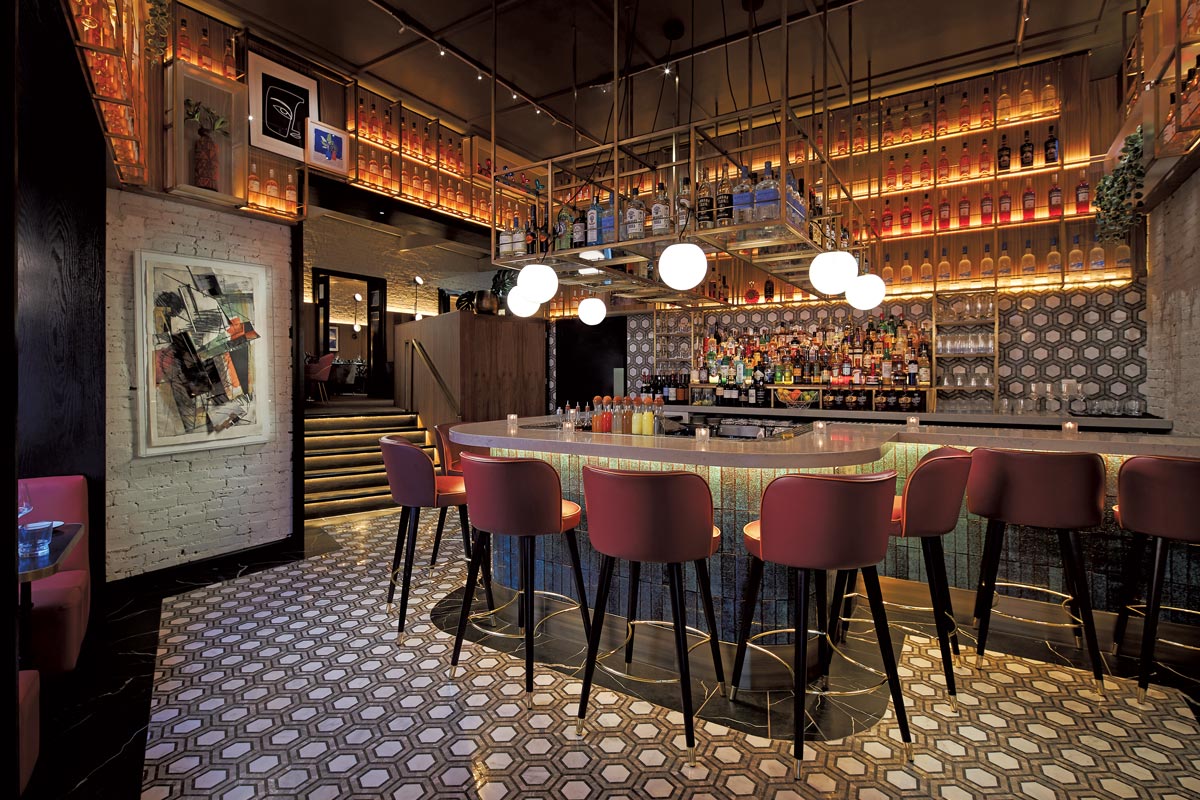
You have been nominated by your peers as national restaurateur of the year. What are your thoughts on that? What does it mean for you?
I have been a semifinalist ten times. This is the first time that I’m a finalist. I’ve been fortunate enough to have all the local awards, restaurateur awards. But I think it’s a great honor when your peers and especially a pool of people believe you deserve to be the finalist. I think it’s a great honor and I’m really honored to have made the final cut.
Several chefs that work for you have won top awards. I’m curious what your keys are in building your front of the house and your culinary teams and does it challenge you to continue to find great people?
It’s been more of a challenge in the last two years than it has ever been. I’ve been fortunate in that sometimes I chase them another time they chase me. So, I’ve been able to find good help all the time. But the difference between me, and another restaurant would be the following: I give them the platform to do what they want to do. They can create, they can make mistakes, and I’m supportive of them and that’s the mindset that I’ve had for decades. I don’t micromanage because they know better than me. I sit down and conceptualize. This is the price point I want it to be, this is what I’d like to do, this is what I like to see, what do you think? And you know, two brains are better than the one! They have different experiences than me and if I really disagree with something then I will make it known. Otherwise, I leave them alone.
Are we done with COVID and what do you want the “new normal” to look like for customers dining in one of your restaurants?
I don’t think we’re done with COVID. We did not think people are still apprehensive, but you see the cases going up in the last six weeks. We see it in cancellations or they’re focusing on sitting outside, or they’ll say, ‘don’t put me close to the other table’. My personal feeling is I think it’s still going to be a couple of years before we see a shift. I’m the most optimistic person but I’m also beginning to realize that it is going to be a while before we see normal.
We don’t see the lunch scene being back yet. Office buildings are empty and people are thinking about converting them into condos and that may be good for the city too. It may not be so bad, but seriously I think we have two to three years to go through this. International travelers are not coming in and I just saw what happened today that now they don’t need to show proof of vaccination before coming in.
What about the real estate marketplace is there going to be some exciting opportunities that might just be too enticing for you to pass on?
I don’t do restaurants just for the sake of doing it. I have to feel it, live it, breathe it, sense it. It’s about operating cost, it’s about a lot of other things. And that’s the only way it has to be. Look, I opened a place on 7th street on the spur of the moment two years ago. The space became available. It was during COVID they closed the restaurant I was walking by and the landlord who is also the owner of the space where La Bise is offered it to me. So, I end up opening a contemporary take out place. Two years ago, I thought it’s going to take a year for them to come back, and by the time they come back I’ll be ready to open. People are not back in town!
To learn more about Ashok Bajaj and the Knightsbridge Restaurant Group, visit their website























